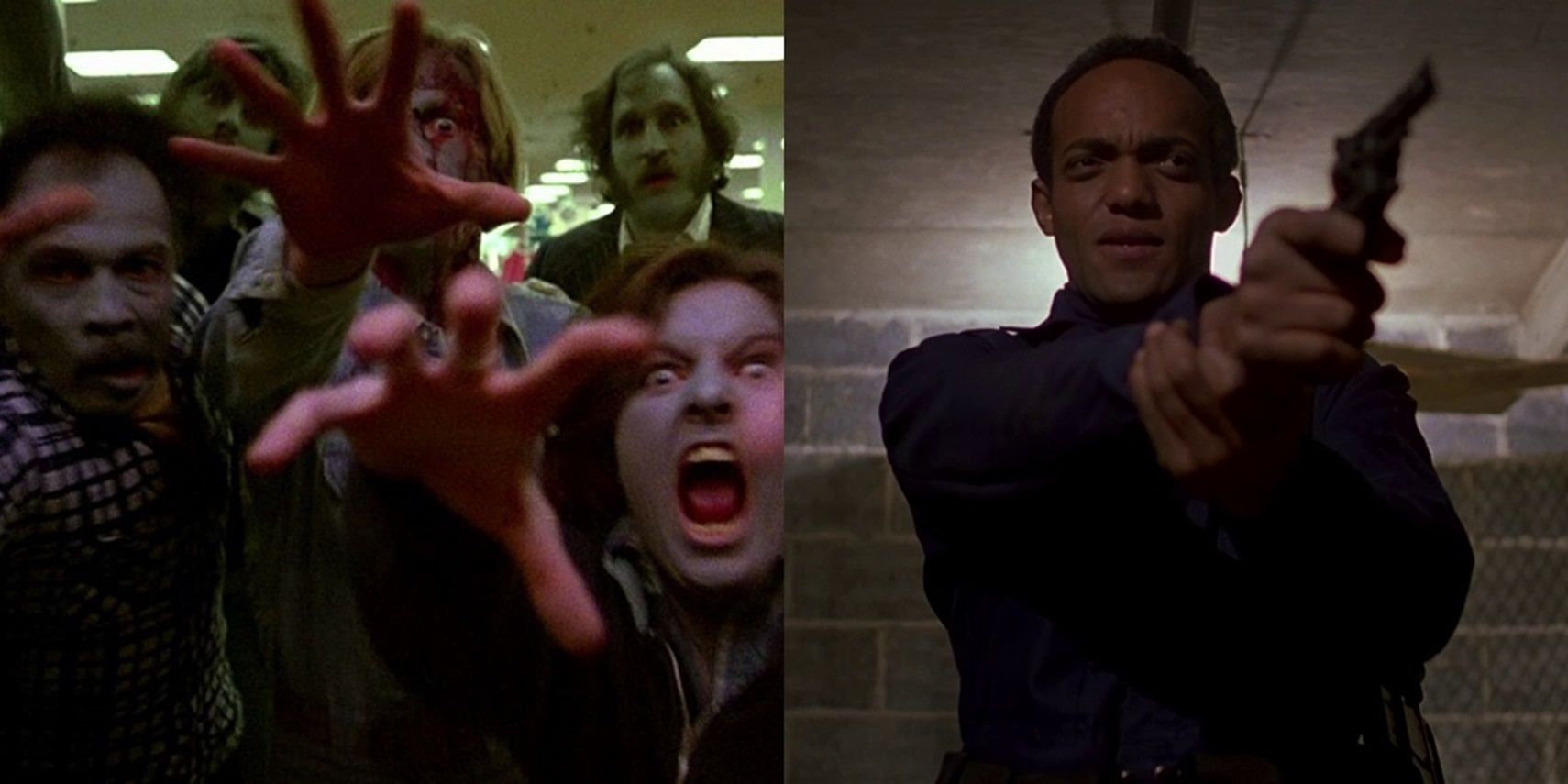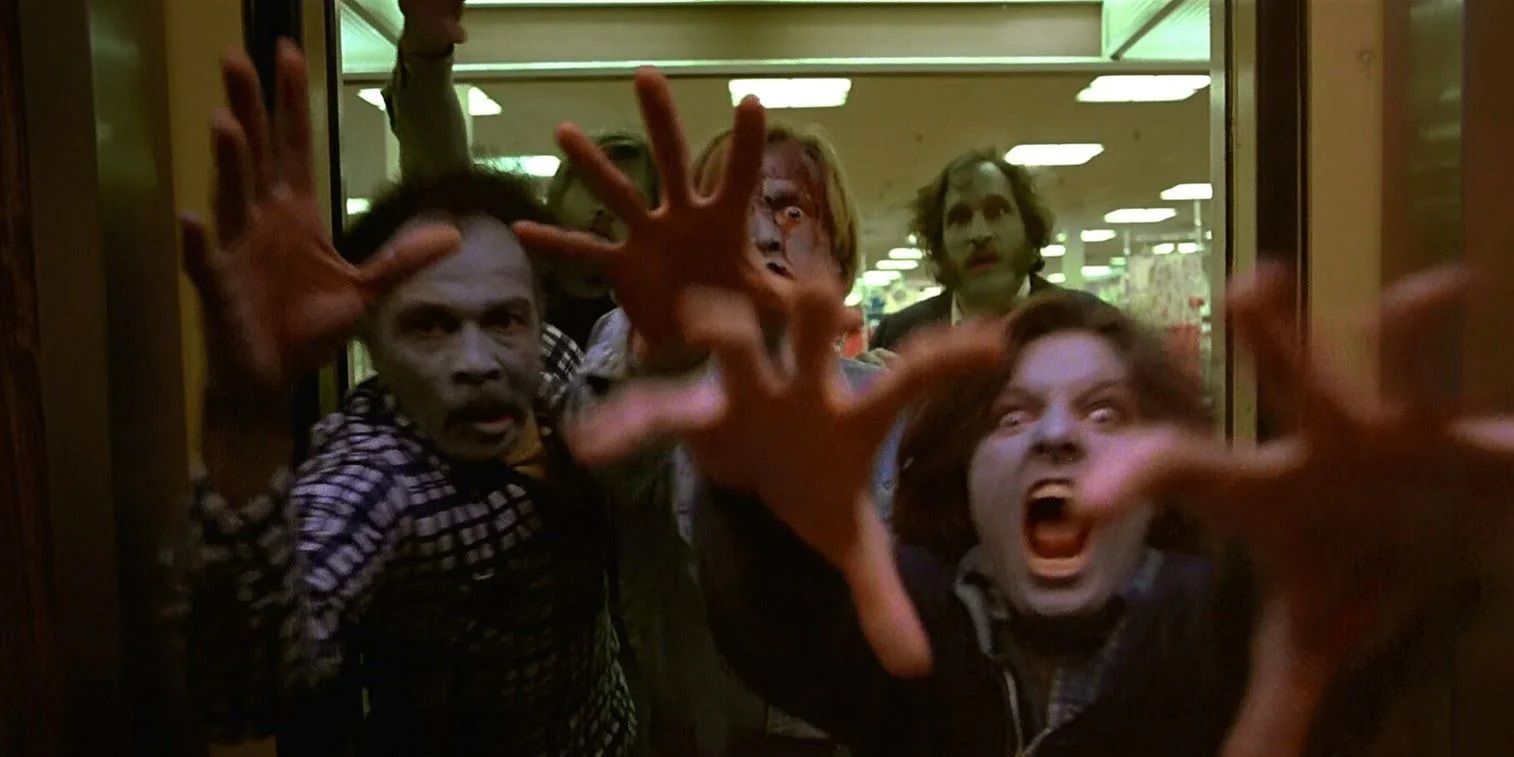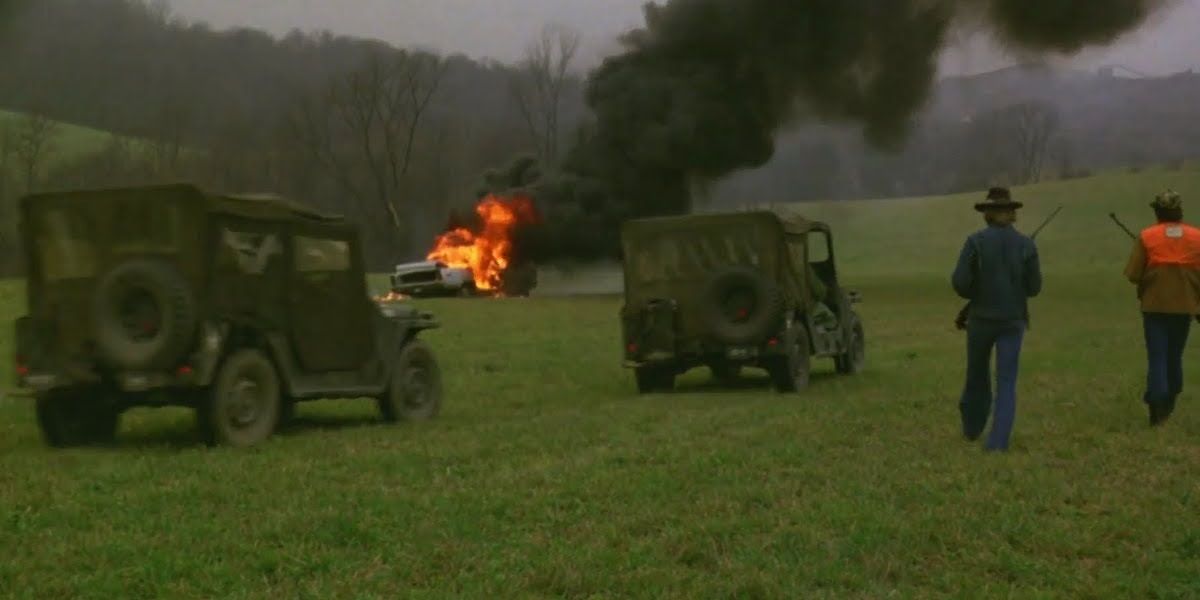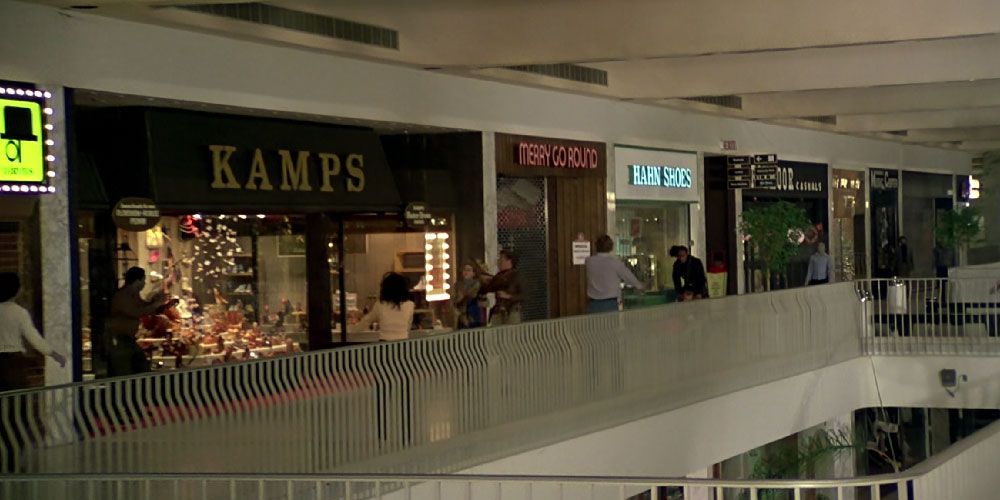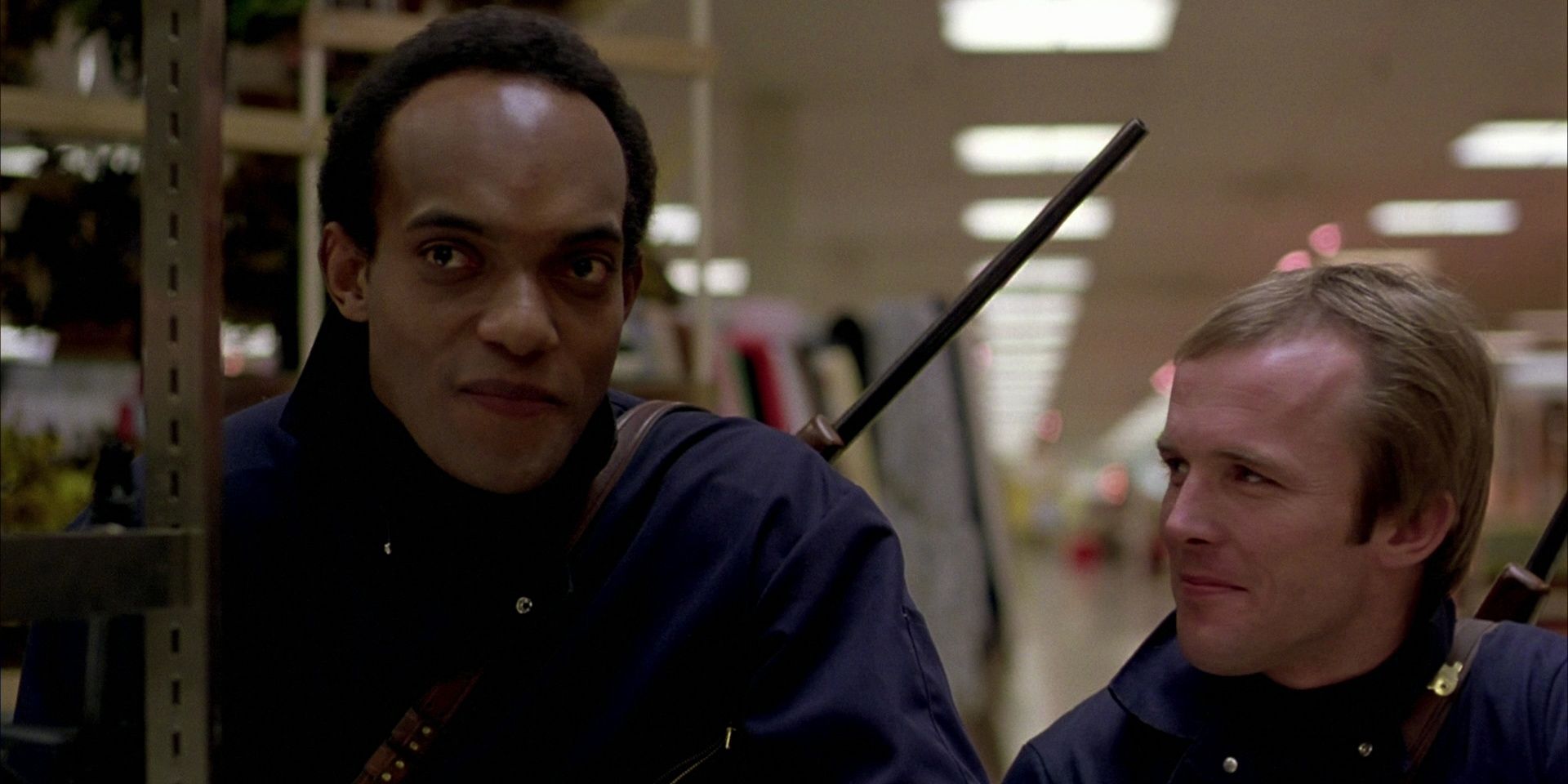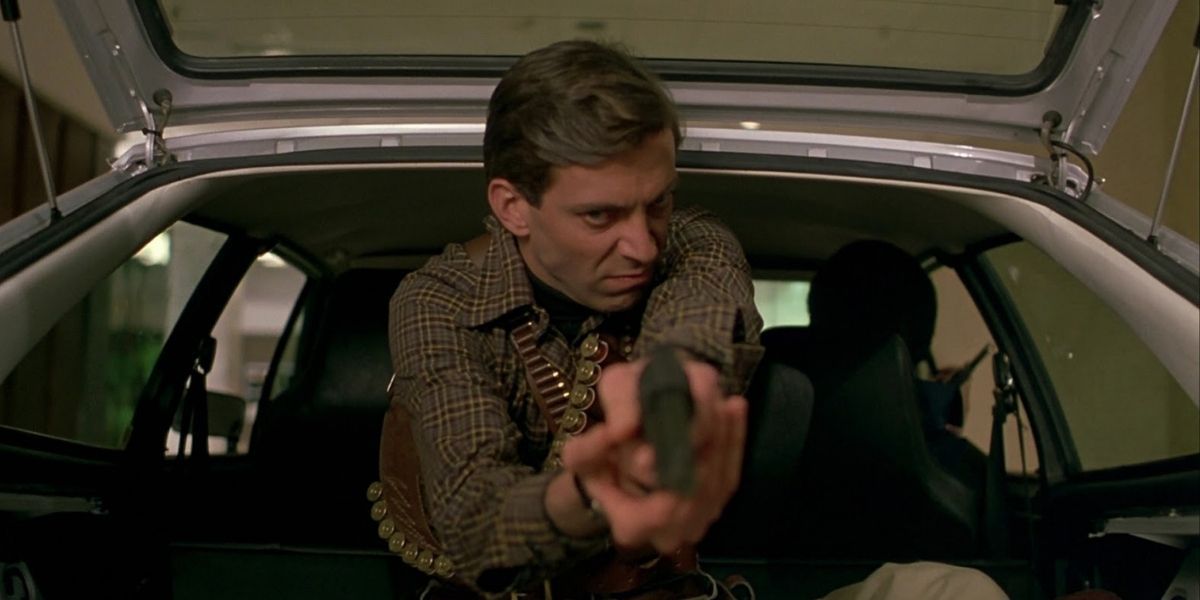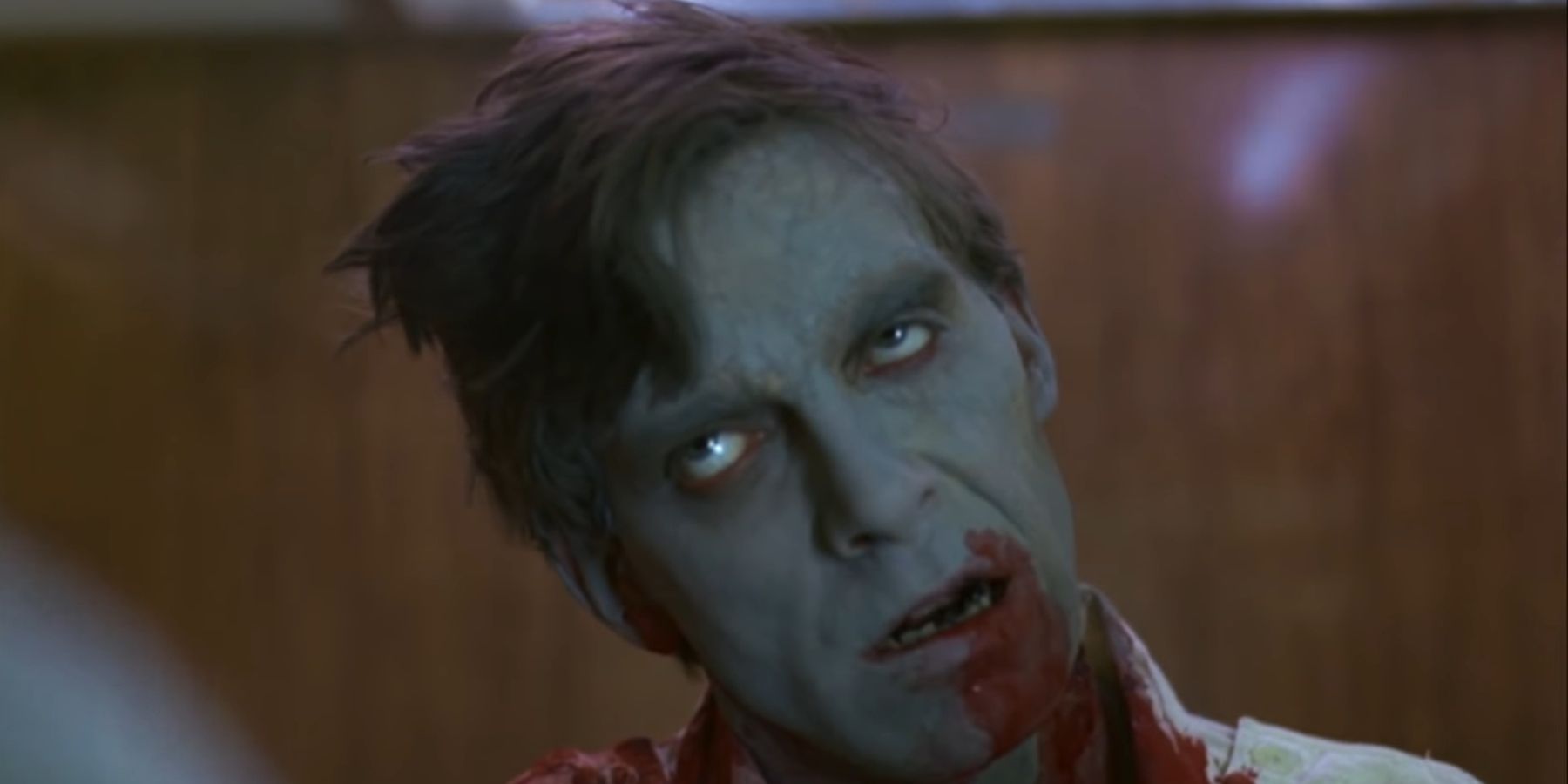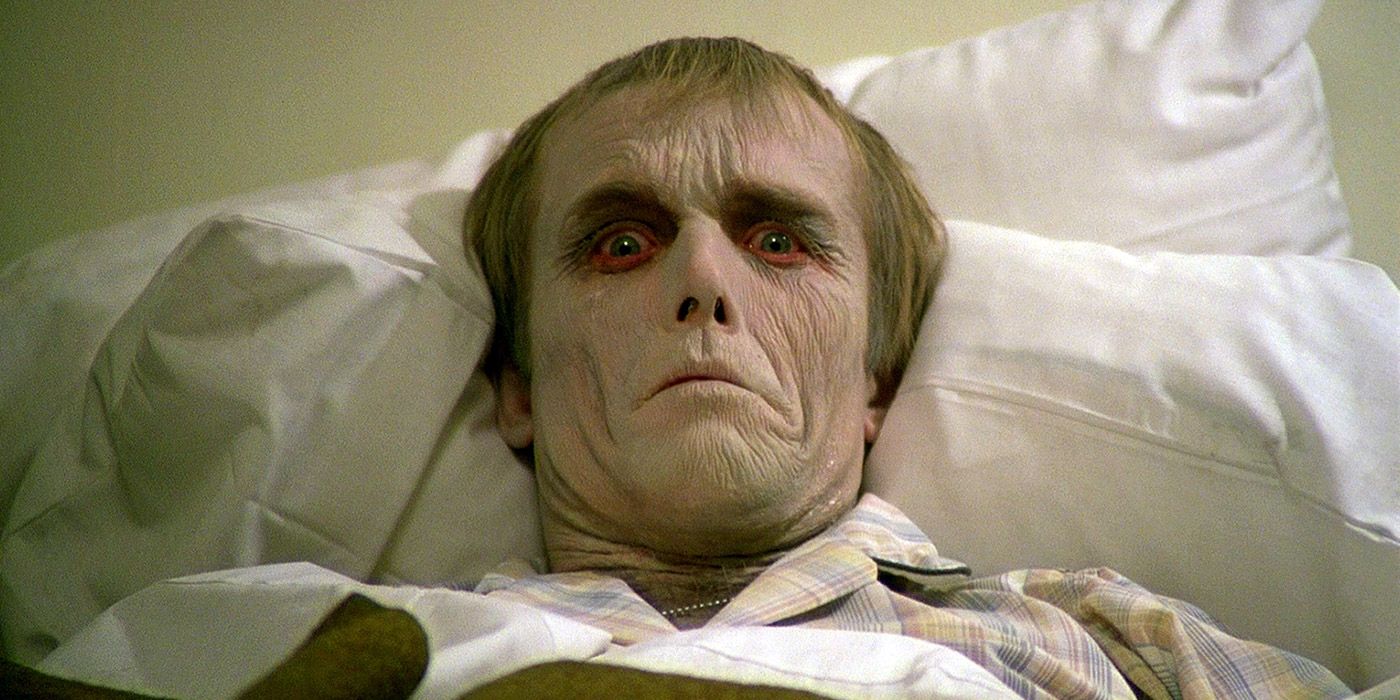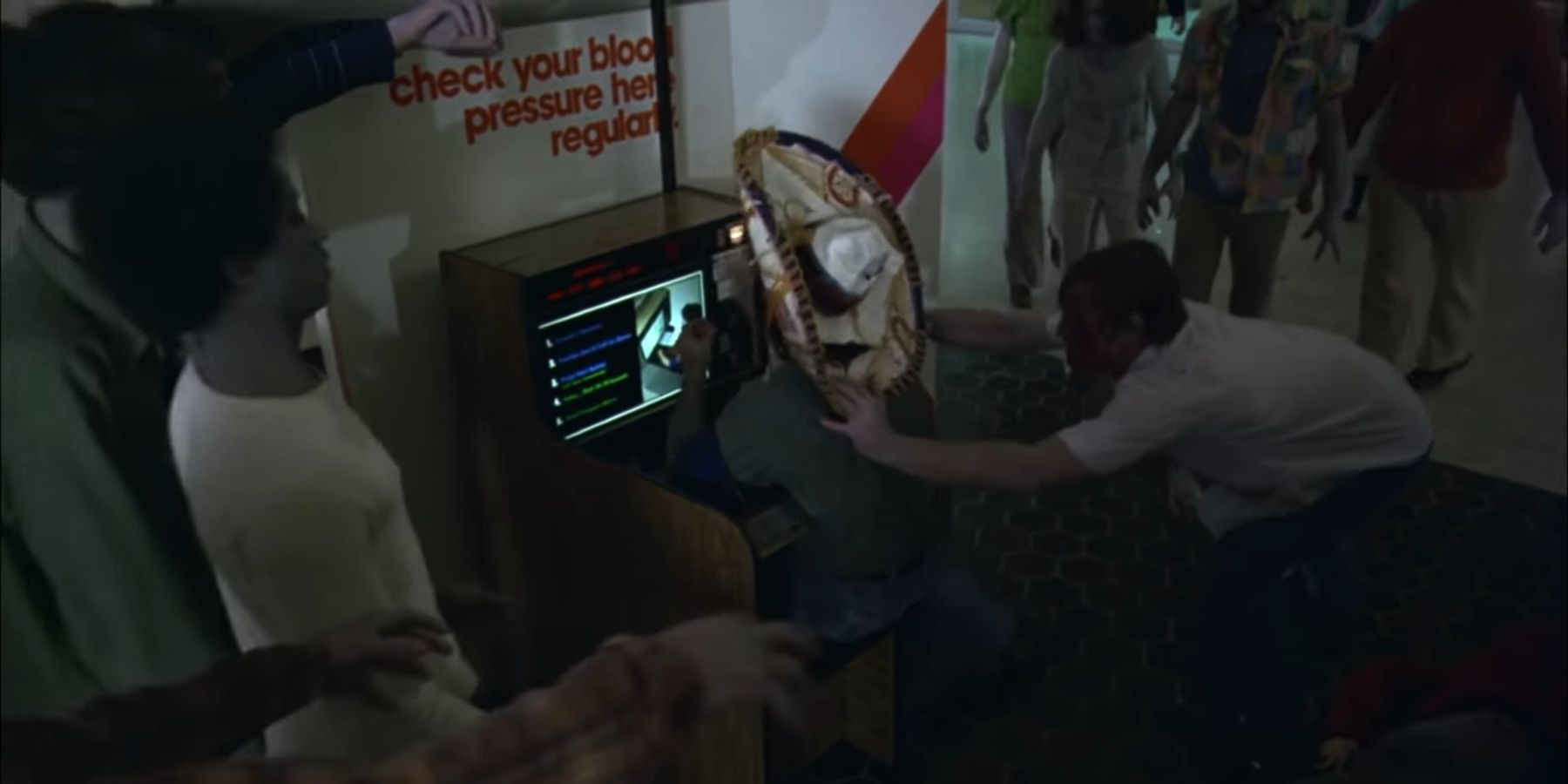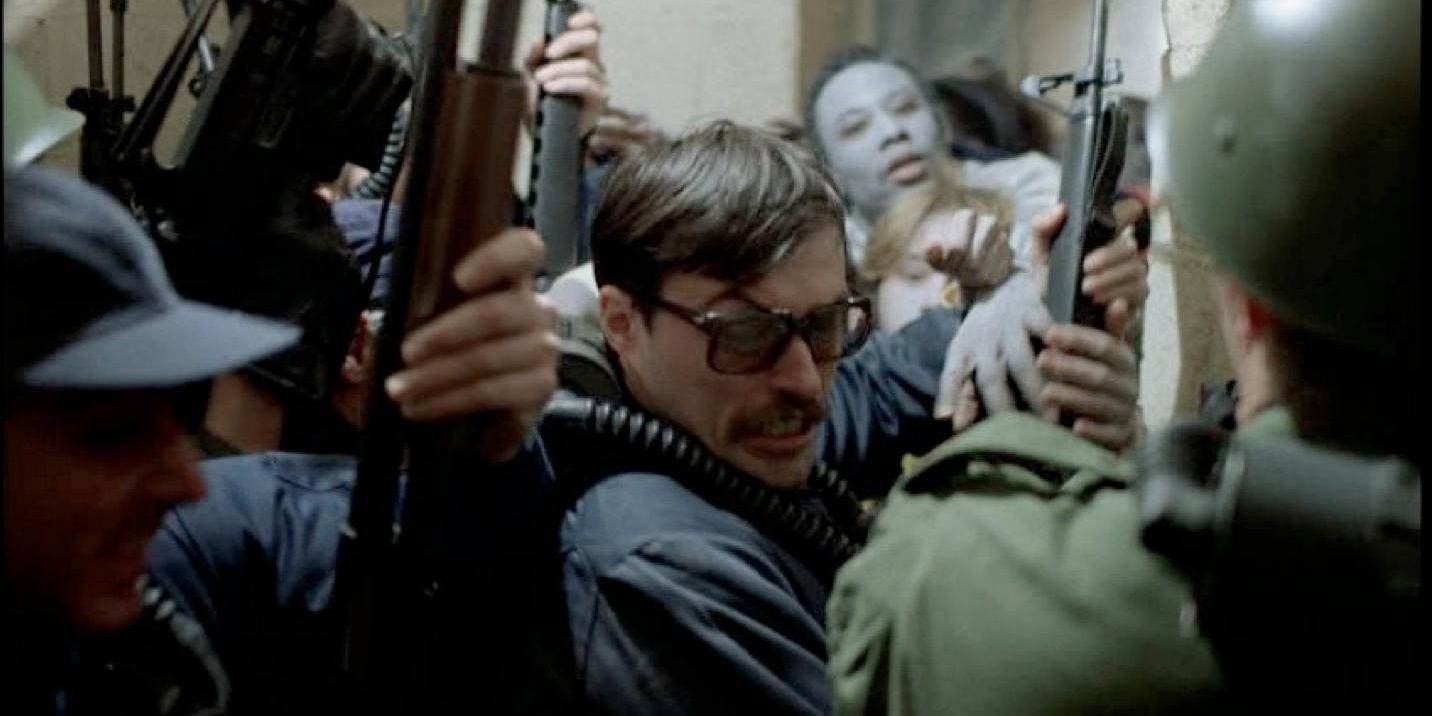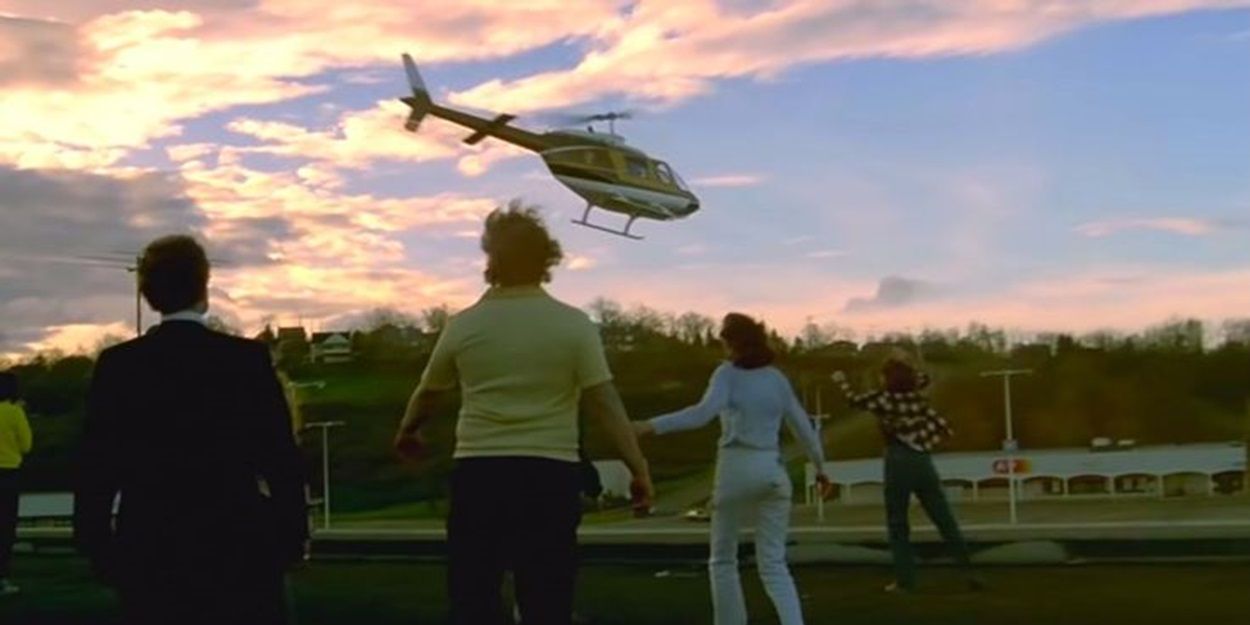Although the concept of the undead has been around for centuries, George A. Romero is renowned as the godfather of the zombie genre because he defined the zombie as audiences know it today – shuffling hordes of bloodthirsty flesh-eaters – in his groundbreaking directorial debut Night of the Living Dead.
A decade after Romero pioneered the zombie genre with Night of the Living Dead, he perfected it with its sequel, Dawn of the Dead. There have since been hundreds of zombie movies hoping to replicate Romero’s success, but Dawn of the Dead remains arguably the genre’s greatest entry.
Tom Savini’s Legendary Makeup Effects
Tom Savini set a high benchmark for zombie makeup with his special effects in Dawn of the Dead. Night of the Living Dead wasn’t able to indulge in pale undead skin or bursts of crimson blood because the movie was shot in black-and-white.
By comparison, Dawn of the Dead’s effects are bursting with color. Savini’s work on Dawn of the Dead launched his legendary, long-running career in horror cinema.
The Epic Scale Of The Opening Scenes
Although the plot of Dawn of the Dead eventually focuses on a small band of survivors holed up in a mall, the opening scenes explore how the zombie apocalypse Romero introduced in Night of the Living Dead is affecting America at large.
Rural areas have been contained by the National Guard, but urban areas are a blood-soaked nightmare. These larger-scale early scenes are a huge part of why Dawn is the perfect sequel to Night.
The Satire Of Consumerism
Romero instantly established the zombie genre as a great vehicle for social commentary with his harrowing portrait of racial tensions in Night of the Living Dead. Dawn of the Dead has more satirical bite than its predecessor, taking aim at consumerism.
The image of zombies flocking to the mall encapsulates American capitalism. Survivors plunder the mall’s cash registers for money, despite the fact that currency is meaningless in a post-apocalyptic world.
The Cast’s Strong Performances
Much like when he made Night of the Living Dead a decade earlier, Romero cast relative unknowns to lead the cast of Dawn of the Dead – and they all give fantastic performances.
Actors like Ken Foree as Peter and Gaylen Ross as Francine give much more human, nuanced, relatable performances than the zombie genre usually has to offer.
Darkly Subverting The American Dream
Romero’s movie offers a dark subversion of the American Dream. The American Dream is defined by the optimistic view that anything is possible and anybody can become rich and those riches will make them happy.
As a brilliant satirical counterpoint, Dawn of the Dead is defined by the pessimistic view that everybody is doomed and material possessions are meaningless.
The Over-The-Top Bloodshed
Audiences come to zombie movies to see blood, and lots of it. Dawn of the Dead certainly doesn’t scrimp on the bloodshed. In fact, the bloodshed is so over-the-top and so far out there that it feels like a statement.
Like Sergio Leone’s exaggeratedly graphic spaghetti westerns, Romero’s over-the-top bloodshed feels like a satirical critique of the movie’s own genre.
Tongue-In-Cheek Humor
Romero’s style of horror filmmaking is marked by the tongue-in-cheek humor running alongside all the scary stuff (and never at the expense of the scary stuff). He didn’t establish this style right away, as there were no laughs in Night of the Living Dead.
The original Dead movie is a bleak, morbid affair (not that there’s anything wrong with that), but Dawn of the Dead established Romero’s unique comedic style with both offbeat gags and unrelenting terror.
The Biker Gang Attack
The stakes are significantly raised at the turn of the third act when an anarchic biker gang spots the helicopter and starts running amok in the mall, allowing a horde of hundreds of zombies into the survivors’ sanctuary. When an enraged Stephen fights back, the bikers shoot him dead.
This sequence established the idea that The Walking Dead would later do to death (so to speak): even in a zombie-infested wasteland, other humans are still the most terrifying monsters.
Goblin’s Creepy Prog Rock Score
Romero and Dario Argento used different music in the cuts of Dawn of the Dead that they pieced together for their respective markets. Romero’s U.S. version features mostly stock music, but Argento’s international version utilizes a creepy progressive rock score by Goblin.
While Goblin’s score doesn’t appear in Romero’s cut in its entirety, the director enjoyed it so much that he did showcase three of Goblin’s tracks in his version of the film.
The Ambiguous Ending
Romero used a definitive ending to haunting effect in Night of the Living Dead – as Ben survives the night, only to be mistaken for a zombie and gunned down – but he used an ambiguous ending to even greater effect in Dawn of the Dead.
Peter and Francine make it onto the roof and leave the mall in the helicopter. Flying off to an uncertain future with limited fuel is the perfect ending for a zombie movie, because in that kind of bleak end-times scenario, there is no closure.

